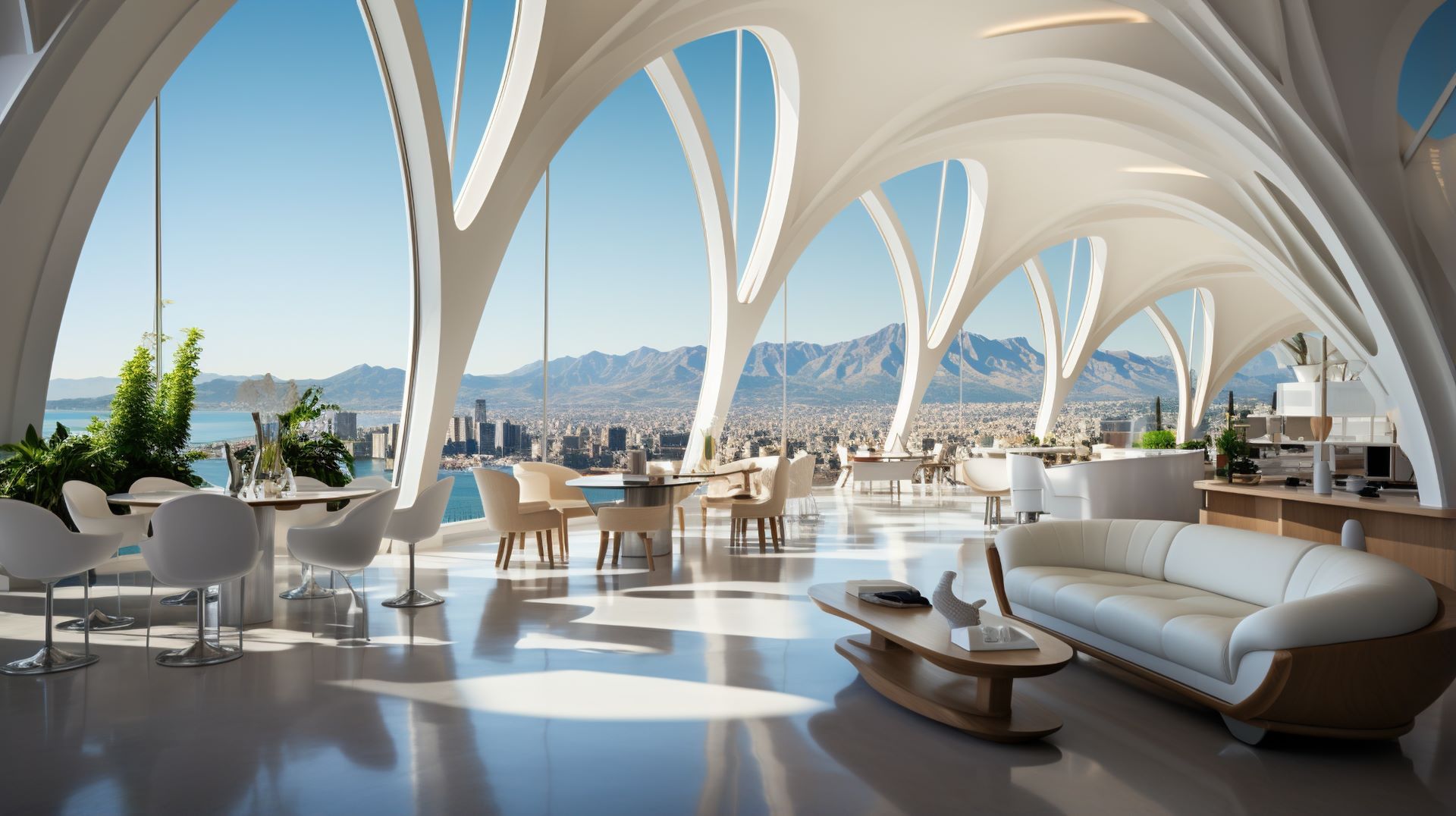A lot of time and attention goes into curating unforgettable dining experiences. To create something truly special, every one of our senses must be firing on all cylinders. The food has got to be on point, for sure, but the sound and visual ambiance are just as important. One interior element that can improve both is your restaurant ceiling design.
Restaurant ceiling design is an important part of the overall look of the establishment but done right, it will also contribute to great sound inside the space. If you don’t know much about the different ceiling options out there, it can be difficult to understand how such an often overlooked design element contributes so heavy-handedly to the acoustics in the space.
With the right design, your restaurant ceiling will not only deliver impressive visual stimulation but will also enhance the sound. We’re going to look at how restaurant ceiling design can impact both the sound and visuals in the room, as well as show you some great styles that deliver big benefits in both arenas.
How Restaurant Ceiling Design Affects Audio
It should come as no surprise that the look of the ceiling can have a significant impact on how any business presents itself. If you’ve ever dined in an old cafe with stained, aging drop ceilings, you already know that it detracts from the overall experience. On the other hand, if a restaurant has a really cool looking ceiling that you’ve never seen before, you know the purveyors pay attention to the details. But how does a seemingly simple element like ceiling design in restaurants impact sound?
When sound waves travel through an enclosed space, they do so almost endlessly until they are either reflected or absorbed. If the sound waves reflect back toward the source, they can create an echo. If the echo strikes another reflective surface and returns again, it can combine with other echoes and produce reverberation. This is an additive phenomenon that can result in loud spaces and difficulty communicating if not addressed.
Many restaurants now understand the importance of incorporating dense, porous materials into their restaurant design to absorb sound waves and reduce the prevalence of acoustical issues. But what about the ceiling? This is often the largest, uninterrupted expanse of reflective surfaces in the entire space. If you choose the right restaurant ceiling design, it can add a pop of visual interest and address acoustics in one simple step.
The restaurant ceiling design ideas we’ll look at today affect acoustics by reflecting some waves in ways that help eliminate echo and reverb from the equation, as well as absorb other waves to keep the noise down.
Why Restaurant Acoustics Matter
Not everyone understands the full impact of acoustics on a restaurant. Some may want a loud, active sounding restaurant that makes people think it’s a hopping place to be. But if the sound isn’t great or the noise gets too loud and guests have a hard time talking to their groups without yelling, this can negatively affect dwell time and may even keep some patrons away permanently. In fact, noise is one of the most common complaints restaurant guests report, so it’s worth addressing.
Finding the right acoustical balance gives you the ability to represent your brand exactly the way you want to. Even if you want it lively, you’ll still want to preserve the ability of your customers to communicate with one another. Similarly, if you prefer a quiet cafe or restaurant, you still want your guests to feel comfortable communicating freely in the quiet space. Creating the perfect ambience is all about finding the right balance.
Part of achieving this balance involves utilizing absorptive panels and keeping music at a reasonable volume, but tweaking room surfaces that lend themselves to great acoustics can be an even more impactful element of acoustic optimization.
Moving walls is almost always a huge undertaking, but we can make adjustments to the restaurant ceiling design with minimal impact on the restaurant’s daily operations. You can even install many styles over the weekend as a DIY project. Whether you’re in it for the brand image enhancement or market competitiveness, installing an acoustically efficient ceiling is a great investment in your establishment.

Restaurant Ceiling Designs that Deliver
Today, we’re going to focus on suspended ceilings systems. Many restaurateurs are embracing the industrial look of overhead mechanical, electrical, and plumbing (MEP) systems in their restaurant interior design these days. It looks cool, but those surfaces are incredibly reflective and overhead MEP systems create noise of their own that contributes to the ambient sound volume in the room.
Suspending acoustical materials between ducts and pipes and your guests not only addresses customer created noise, but also lessens the impact of these MEP systems. It also allows for versatility in lighting.
When it comes to the ceiling in restaurants, lighting design is an important element. Lighting should reflect the overall vibe you’re after. Many suspended ceiling systems create gaps and spaces that allow us to drop lighting wherever we need it. Besides that, they deliver the same benefits when plotting locations of ceiling fans for restaurants.
There are a lot of different ceiling designs that lend themselves to great acoustics, but some stand above the rest. The examples we’re going to cover contribute just as much acoustically as they do aesthetically. This is saying a lot, since each example looks good enough to set your establishment apart from the competition. Let’s dive in.
False Ceilings with Acoustic Panel Inserts
One of the simplest styles to install may be the false ceiling, also called a drop ceiling, with acoustical panel inserts. If you’ve already got a drop ceiling with a T-grid that’s still in decent shape, you can remove the old tiles and replace them with modern tiles with an acoustical backer. There are a ton of options to choose from, and they do a great job of reducing echo and reverberation.
If you want a more upscale look, microperforated panels can fit the same grid and have fantastic acoustic benefits. Each panel is pierced with thousands of tiny holes that allow sound to pass through, reducing reflections. They are available in a wide array of beautiful finishes and you can up their acoustic performance with the optional acoustical backer.
For those without an existing false ceiling in the restaurant, Don’t let that dissuade you. Installing one is very simple and can usually be done in a day or two by a few friends with very basic construction skills.
Ceiling Clouds
If you’re looking for something with a little more visual pop and already like the look of your overhead space, ceiling clouds can be an awesome choice in restaurant ceiling design. Ceiling clouds are acoustical tiles that are suspended from the ceiling to bring sound absorption down into the space and greatly reduce acoustical issues.
You can find them in any shape and finish you need to bring the room together, so you can really let your imagination run when designing with ceiling clouds.
Acoustic Baffles
Like ceiling clouds, acoustic baffles allow you to improve the acoustics in your restaurant while preserving the industrial aesthetic of your exposed MEP systems. They are also suspended between guests and the overhead space, but instead of utilizing acoustic panels, baffles utilize suspended planks.
Acoustic baffles redirect sound reflections so they are far less likely to lead to acoustical issues. They’re great for reducing echo and reverb, but not so great at blocking noise from your MEP systems from reaching the tables below. Luckily, you can address this noise by adding an optional acoustical backer if you like.
Grille Ceilings
Grille ceilings are laid out like a grille, as you may have guessed. Utilizing equally spaced parallel planks that span the space allows some waves to reflect and some to pass into the overhead space. The waves that pass through are slowly diffused as they repeat this process above the grille ceiling, greatly reducing the volume of ambient noise.
Like acoustic baffles and microperforated panels, you can add an acoustical backing to improve your grille ceiling’s acoustic performance. It’s a wonderful restaurant ceiling design trend that pulls double duty by keeping your establishment looking and sounding great.
Coffered Ceilings
Coffered ceilings are very similar to drop ceilings in concept. They are created through combining a grid system with recessed panels that sit at the top of the grid. Coffered ceilings, however, utilize much more substantial and decorative beams in place of the T-grid systems utilized in standard drop ceiling design.
Acoustically, coffered ceilings are great for preserving privacy. The deep wells created by their design allow sound waves to go up and down, but don’t allow them to travel sideways very well. This means guest conversations don’t travel too far off course and into someone else’s conversation.
It’s a classic design, but lends itself very well to modern design. If you’re designing for longevity, coffered ceilings are one of those ceiling ideas for restaurants that’s unlikely to go out of style any time soon.
Get Professional Help
Enlisting the help of professionals can prove to be enormously beneficial. Blending architectural impact and acoustic design isn’t as simple as slapping up a few acoustic panels or switching to soft cloth furniture. You need the proper mix of reflective and absorptive surfaces, and working with people who have done it before can ensure you get the results you’re after.
Identify some restaurant ceiling design styles you like, and find out which ones fit into your budget. Some restaurant design ideas can be very expensive, while others can be done at incredibly reasonable prices. Working with professionals is the best way to get a lot of bang for your buck. We can help you identify what styles will work best for your space, and provide the professional acoustic materials that will deliver the balance you’re after.




